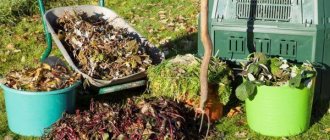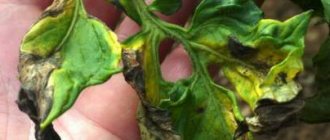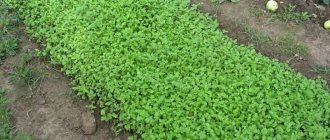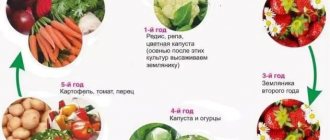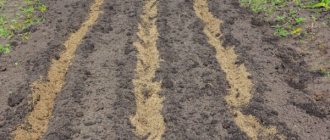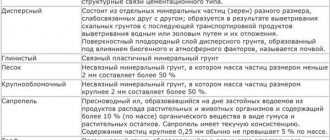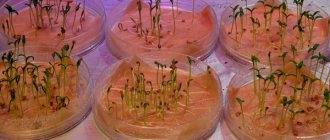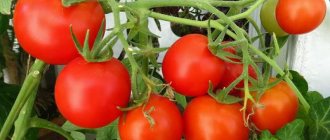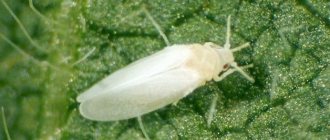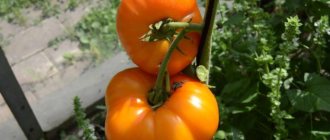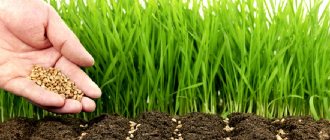What is late blight?
Before we consider the question of how to cure the soil from late blight, let's find out what the disease is? Late blight is a fungal infection that can affect a wide range of garden plants. Tomatoes and potatoes, as well as some nightshade plants, most often suffer from negative manifestations. The causative agent of the disease is the microscopic fungus Phytophthora infestans. The latter parasitizes not only root crops, but also the ground fruits of plants. If you leave everything to chance, the crop can be completely destroyed.
How to detect?
The first signs appear a week after infection.
Main symptoms: brown or brown spots surrounded by a white border are noticeable on the lower leaves, which spread quickly. These spots are foci of the disease, which in later stages can cover the entire plant. Late blight causes severe damage to tomatoes and potatoes.
On tomatoes
The stems show dark, moist, round areas. After rain, a white coating can be seen on the underside of the leaf blade. Brown spots also appear on tomato fruits, which quickly increase in size and can spread to healthy vegetables.
We suggest you read: How to preserve carrots for the winter at home if you don’t have a cellar: ways to preserve the harvest until spring in an apartment, as well as in the countryside
Therefore, it is important to throw away damaged tomatoes immediately and not leave them on the bush. But it happens that the signs of the disease change, becoming in the form of circles with yellow and brown stripes, dark rings with a yellow border, or like oily, depressed inclusions.
On potatoes
The appearance of this disease is noted on tubers, trunks, and leaves. Development begins during the flowering period. You can see brown leaves at the bottom of the bush, then the spores spread and damage the upper parts of the young shoots. The foliage turns black, withers and dries out.
Important! If the disease is not stopped, the plant will subsequently die completely.
Distribution mechanism
Initially, scientists believed that such an infection spread across land along with potato tubers. However, as the results of recent studies show, late blight is transmitted by seedlings and seeds of a wide variety of cultivated plants. Fungal spores are able to remain active when exposed to a wide range of negative environmental factors. They are not afraid of low and high temperatures. The disease is resistant to some chemicals. All this significantly complicates the fight against late blight.
To understand how to get rid of late blight in the ground in the fall after tomatoes or potatoes, vegetable growers use a variety of tricks. Often, it is not possible to overcome a fungal pathogen due to the use of high-quality seed material, as well as proper soil preparation. If conditions are favorable, a plot of land can become infected with even a few spores carried by the wind.
Where and when is it formed?
Pathogenic microelements are stored in affected vegetable tubers left in the ground after harvesting, in compost heaps along with the tops of diseased plants, in the soil, on the walls and roof of the greenhouse, in seeds, and on gardening tools. The main task of the gardener is to prevent the spread of harmful microflora. Late blight prefers:
- soils with a lot of lime;
- dense plantings, this happens in greenhouses where there is no access to air for ventilation, high humidity and temperature are maintained;
- sudden temperature changes, which result in the formation of dew - an additional source of moisture;
- plants with weakened immune systems;
- excess nitrogen fertilizers in the soil.
Attention! With the arrival of spring, harmful organisms begin to actively develop.
The trigger is suitable conditions: ambient temperature above 10°C; humidity 75%, which last for several days. Together with raindrops, spores fall into the ground or infect the vegetative areas of young plants through wounds, leaves, tubers, and stems.
What factors contribute to the appearance of late blight?
Fungal pathogens are active at high soil moisture. Phytophthora usually develops in the soil in the summer, when an abundance of dew falls on the ground in the morning. The air temperature should be within 15 o C. For this reason, the fungus most often spreads in August. After all, it is during this period that the air in the morning becomes cooler and there is an abundance of precipitation.
How to cure the soil from late blight in the fall? The difficulty of combating the disease lies in the lack of universal solutions. However, there are several methods that make it possible to eliminate the problem. We'll talk about the most effective methods below.
Symptoms of late blight
Symptoms of this disease appear on plants by mid-summer. During this period, the temperature even at night remains optimal for the development of the fungus. Humidity is maintained by rain or frequent watering of plants by careful gardeners.
The entire plant is exposed to late blight: first the leaves and stems dry out, and then the tomatoes themselves are affected. Most often, fruits that are still green or just beginning to ripen are affected.
With high humidity, infected areas of the plant begin to rot, and in dry times they dry out and break.
Sometimes you can see white and yellow hairs with heads or points at the ends. Most often they are clearly visible on tomato leaves. This is how late blight multiplies, and spores mature in the heads for further spread throughout the greenhouse to other plants. These areas should not be wiped; the spore capsules may rupture and small particles of spores may fly over long distances.
What danger does the disease pose to the crop?
Gardeners are constantly wondering how to treat the soil for late blight in the fall after potatoes, since the fungal pathogen often manifests itself again with the onset of the new planting season. At the initial stages, cultivated plants develop gray-brown spots on the leaves. Then the shoots gradually die off. Inflorescences also suffer from the disease, which dry out when the ambient temperature rises, and rot when there is precipitation.
Land owners are trying to figure out how to get rid of late blight in the soil in the fall, because the return of the disease next year is fraught with contamination of the fruits. Initially, they are covered with brownish spots that can grow in all directions, including deeper. The fruits gradually harden and begin to rot. As for potato tubers, their surface is affected by gray marks. In such areas, depressions appear that can reach the very core of the fruit. If cultivated plants are heavily affected by late blight, there is a probability of losing about 80% of the crop.
Where can the disease appear?
Late blight affects all parts of the plant without exception. These are the leaves, the stem, and even the fruits themselves. The fungus is especially active when air humidity increases, heavy dew appears, frequent fogs, significant temperature changes, when it is unbearably hot during the day and cool at night. Particular attention is paid to too dense planting of nightshade crops on one plot of land.
Practice shows that plants are most often affected by this disease at the end of July or at the beginning of August.
Most gardeners agree that you need to uproot the infected bush and burn it. Only then can we expect that late blight will not spread further.
Late blight can appear both in open ground and in greenhouse conditions.
There are many ways to combat late blight in the spring. First of all, this is the selection of varieties, which consists of carefully selecting cultivated plants on a plot of land. It is recommended to give preference to early ripening varieties that finally ripen and are harvested before the outbreak of late blight. Although you can only plant those plants that are particularly resistant to late blight.
Tomatoes with late blight in the garden
In spring, you can also use specialized chemicals and traditional methods of saving from late blight. But these issues deserve special attention, and we will consider them in more detail later in the article.
Contents :: Search
Infection with bacteria and fungi. As plants grow, they may become sick. After harvesting, bacteria and fungi remain in the soil. Some of them die in the cold, but some can remain in the soil for many years and infect new plantings. A sign is the appearance in young plants of diseases that were present in plants of the previous year (spots on leaves, rotting, etc.)
Pests and parasites. They can be both very small (ticks, aphids) and quite large (moles, mole crickets, slugs). Some of them are well adapted to wintering; they can overwinter either themselves or their eggs (pupae). Sign: Young plants are immediately attacked by parasites in the spring.
Exhaustion. As plants take away nutrients, the land becomes depleted and loses fertility. This disease is characterized by a general stunting of seedlings for no apparent reason (there are no pests, diseases, but the plant is still weak and stunted)
Violation of the structure. The earth can become hard, heavy, form layers, crack, and undergo erosion. This defect is very easy to diagnose. The soil appears rough, cracked, crusts and cracks form, and forms hard lumps to the touch. It is difficult to dig up such soil. It does not retain moisture after watering and dries out quickly.
Weeds. Weeds may take root in the garden bed. A small number of weeds are always present, but sometimes there are a lot of weeds and they clog all the crops. Then we say that the land is overgrown.
Methods of soil disinfection
How to cure the soil from late blight in the fall? It is much easier to cope with the task of cultivating the soil in a greenhouse than in a large open area. However, it is quite possible for novice gardeners to improve the health of the soil even with the most serious infection with a fungal pathogen. To do this, it is enough to resort to the following methods of influencing the soil:
- Agrotechnical.
- Chemical.
- Biological.
How to cure the soil from late blight in a potato field in the fall using such solutions? We will discuss each of the above methods in detail below.
Agrotechnical processing
You can fix the problem as follows. The area for planting cultivated plants is divided into narrow beds. The solution promotes more thorough loosening of the soil and its high-quality aeration. Indeed, in conditions of reduced humidity, mushroom mycelia do not develop so quickly.
How to cure the soil from late blight in the fall? It is extremely important to resort to rotation of plants on the site. In other words, you should not plant the same crops in a specific location every year. For example, if potatoes are returned to the site after a few years, the late blight mycelium has time to die.
Crops that are most susceptible to fungal infections are recommended to be planted after legumes, cabbage, garlic and onions. Nightshades must not be grown sequentially to combat late blight. We are talking about potatoes, tomatoes, peppers, eggplants. For planting, it is better to use disinfected seeds or seedlings of other plants that are resistant to fungi. It is also worth carefully collecting all the tops at the end of the season and burning them right on the spot.
Biological treatment
To rid a small plot of land from late blight, it is not recommended to use chemicals. Preference should be given to biological compositions containing elements that are safe for living organisms. Among the most effective solutions, it is worth noting the drugs “Baikal EM-1” and “Baikal EM-5”. They should be added to the soil before frost.
Fungicides “Trichodermin”, “Fitosporin”, “Baktofit”, “Planriz” will also help to improve the soil. After digging the soil in the autumn, such preparations are applied to the top layer to a thickness of no more than 10 cm. As soon as the snow melts with the onset of spring, the activity must be repeated.
Read also: Ultrasonic repeller for bedbugs and cockroaches
How to fight late blight
- Seeds that are resistant to late blight should be planted.
- It is important to space nightshade beds away from each other.
- Remove fruits and plants affected by the disease from the site and burn them.
- Avoid overgrowing the beds, thin out the plantings and eliminate weeds.
- Protect seedlings from sudden temperature changes. It is better to plant plants after the end of night frosts or cover them with agrofibre.
- The soil should be fertilized moderately, especially with nitrogen fertilizers.
- If possible, use traditional methods of treatment as much as possible; they are more environmentally friendly and will definitely not harm human health.
- Ventilate greenhouses regularly.
The fight and treatment of the dangerous disease late blight often involves the use of toxic chemicals. Therefore, for safety reasons, use personal protective equipment. But it is better to use potent substances only when absolutely necessary.
To combat the fungus, copper-containing, antifungal drugs (fungicides) and folk remedies are used.
Copper sulfate
After you remove all plant debris from the soil, the bulk of late blight spores will be in the top layer of the soil. It is necessary to spill the entire area of the contaminated area with one of the copper-containing preparations, for example, copper sulfate (copper sulfate). To combat fungal diseases, its solution is used in different concentrations:
- 0.5–1% - for the prevention of late blight;
- 3–5% - in exceptional cases (in case of severe damage) to disinfect a plot of land, but after such treatment nothing can be planted on the soil for a year.
Copper sulfate is widely used in gardening, but all work with it must be done with precautions.
After this, the area is dug up to the depth of a spade bayonet and again treated with ready-made fungicides, for example, Ordan.
Biofungicides
Unlike chemical fungicides, biological preparations do not have a negative effect on the soil. They contain biological material that has a depressing effect on late blight. The following preparations can be used to disinfect soil:
- Fitosporin-M, containing a strain of aerobic soil bacteria that suppress the proliferation of infectious agents. These bacteria reproduce better in warm weather, but do not die in winter and continue their activity during warming;
- Alirin-B is a biological fungicide based on soil bacteria that inhibits the growth and reduces the number of pathogenic fungi;
For watering the soil, the dosage is 2 tablets per 10 liters of water, solution consumption is 1 liter per 1 square meter. m
- Trichophyte and Trichodermin are products based on phytophthora antagonist fungi that destroy parasitic microorganisms and introduce antibiotics into the soil to fight the disease. These preparations require an acidic environment, i.e., liming of the soil cannot be carried out simultaneously with disinfection. Treat the soil in the evening as close to dark as possible, followed by harrowing, since these bacteria do not tolerate sunlight;
To spill the soil, prepare a solution of 200 g of Trichophyte per 10 liters of water
Tips for preparing the soil and restoring its nutritional properties. How to restore decreased fertility? What to do if the soil is sick and the plants are withering? Practical experience. (10 )
How to cure the soil? Soil diseases. Fertility restoration
Contents :: Search
The material is an explanation and addition to the article: Do-it-yourself fertile agro soil. Need plant soil? Do it yourself. Practical experience in cultivating and cultivating agro-soil plots for beds, homestead farming, growing plants.
Often, on a certain piece of land, the yield drops sharply. In this case, it is customary to say that the earth is sick. Let's try to figure out what lies behind this concept and what can be done about it.
Hardening, by...
The threat of late blight is likely both in greenhouse conditions and when growing tomatoes and other crops in open ground. The spores of the pathogen are resistant to frost and can survive in the soil for several seasons. It is important to carry out soil cultivation to ensure favorable and safe conditions for plants next year.
To combat late blight, the following methods are used:
- soil treatment with chemicals;
- introducing biological compounds into the soil;
- agrotechnical methods;
- traditional methods.
There are also preventive measures to combat fungus, which are aimed at creating an unfavorable environment for pathogenic microflora.
The oomycete prefers to settle on nightshade crops, so it is recommended to observe crop rotation. If you are planting tomatoes in open ground, constantly change the location where you plant the bushes. To grow tomatoes, also adhere to the following rules:
- Tomatoes should not be planted next to potatoes, since the latter is most often susceptible to infection. Spores from root crop bushes can be transferred to nearby plantings;
- maintain a distance between the tomatoes so that they have enough space for air circulation;
- provide regular watering, but do not overwater the plants;
- after harvesting, it is necessary to dig up the area using a moldboard method to a depth of 20-30 cm;
- The soil for seedlings can be doused with boiling water to kill the spores.
We invite you to familiarize yourself with: Red sugar tomato characteristics and description of the variety
You can also use a solution of potassium permanganate as a product that is safe for crops but active against fungi. Dilute a pink solution in a bucket of water and pour over the area where you plan to plant nightshades. The procedure can be carried out in the fall after harvesting and in early spring after the snow melts. After treatment, the soil is covered with covering material.
In case of slight infection of plants with late blight, and also as preventive measures, specially prepared biological compositions can be used. They are developed on the basis of substances that are safe for animals and people and do not have a cumulative effect on the crop. The following remedies are effective against fungus:
- "Trichodermin";
- "Fitosporin";
- "Planzir";
- "Baikal EM-1";
- "Baktofit";
- "Baikal - EM-5";
- "Alirin B";
- "Phytocid M".
The preparations are diluted according to the instructions indicated on the packaging and the soil is treated before the onset of frost. The substances contained in biological products have a depressing effect on spores and improve the health of the soil. After the snow melts in the spring, it is necessary to water the soil again with the applied composition to a depth of at least 10 cm.
When plants are heavily infected with late blight, radical measures using effective chemicals are necessary. In specialized stores, one of the following drugs is purchased for treating plants and land:
- "Bordeaux liquid";
- "Quadris";
- "Oxychom";
- "Home";
- "Bravo" etc.
These are fungicides that contain substances that act on pathogenic mycelium. The use of drugs in accordance with the instructions kills fungus and spores. In case of frequent plant diseases with late blight, regular treatment of crops and soil is carried out. To consolidate the effect, drugs are applied to the ground in the fall after harvesting and in the spring after the snow melts. When working with compounds, precautions must be taken.
Traditional methods
In case of rare manifestations of late blight plant diseases, it is not necessary to use potent fungicides and chemicals to combat the fungus. Using traditional methods of fighting fungus gives a positive effect. If there are rare cases of blackening, curling or spotting in the garden, use the following methods:
- They will generously spray the soil and bushes with a solution of kefir. To prepare it, take 1 liter of fermented fermented milk drink and add 10 liters of water;
- spray the plants and soil with a solution of water and whey. To prepare the liquid, take equal proportions of both components. For example, for 5 liters of water you will need 5 liters of whey;
- water the soil where the tomatoes grow at intervals of 10 days with an infusion of hay and urea. Hay is immersed in 10 liters of hot water and urea is added. Keep the infusion for 5 days, filter and treat the soil and plants;
- spray the bushes and ground with a solution of water, wood ash and laundry soap. Prepare a concentrated liquid in a 3 liter jar. Mix 500 g of ash with half a piece of grated soap and add water;
- sprinkle the soil and row spacing with wood ash. It is better to do this before rain or watering.
Add a few drops of iodine to the solution of any folk recipe. It serves as an antiseptic and will effectively deal with fungus.
The listed measures to combat oomycetes are effective if the area is not subject to massive infection. Traditional methods are also suitable as prophylaxis against fungus.
To prevent contamination of soil and plants with mycelium, it is necessary to adhere to a number of rules:
- do not use uncultivated soil for planting seedlings;
- do not transfer soil from unknown areas;
- remove diseased plants immediately;
- Dry and burn the tops of affected crops;
- regularly treat bushes with fungicides;
- heal and renew the soil on your site;
- use green manure sowing;
- Apply products to the soil that have a targeted effect against fungal microflora.
It is necessary to act comprehensively to protect your crop from death as a result of late blight.
Late blight should not be ignored. Spores can destroy the entire crop. To combat mycelium, it is necessary to apply comprehensive control measures. Combine agrotechnical advice, apply biological products or folk remedies, and also regularly carry out soil prevention in autumn and spring.
How to cure the soil from late blight using folk remedies?
There are several time-tested methods for soil disinfection:
- You need to take a liter of fermented kefir and dilute it in 10 liters of water. To kill the late blight pathogen, it is enough to spray the land area weekly with the product.
- The right solution in the fight against the disease is the tinder fungus. You can find it on the trunks of old trees. The mushroom should be thoroughly ground. About 100 grams of raw materials need to be poured with a liter of boiled water. The resulting decoction must be filtered and used for sprinkling areas. It is recommended to repeat the event every two weeks.
- You can heal the earth using ash. The latter must be sprayed in areas where it is planned to plant cultivated plants. You should take part in the event once a week.
Prevention
The ideal preventative solution when fighting late blight is the dispersion of so-called green manure on the site. The latter include plants with a powerful ground part, which are able to protect the soil from exposure to direct sunlight and enrich it with oxygen and nutrients. Asteraceae and cruciferous plants are usually used as green manures.
In the fall, it is necessary to completely dig up the area and add organic fertilizers, such as humus, to the soil. At the same time, you should not use nitrogen substances. After all, their use leads to the appearance of late blight immediately when favorable conditions are created.
As noted above, spores begin to actively develop at high humidity. This can be avoided by using the soil mulching method. Covering the soil with a layer of mulch will create a reliable barrier to a wide variety of fungal diseases, including late blight.
In terms of prevention, it is important to periodically flavor the soil with copper, potassium, and phosphorus. These substances increase the resistance of cultivated plants to infection by pathogens of fungal infections.
Drip irrigation of the soil gives good results. In this case, the soil is not oversaturated with moisture and favorable conditions for the spread of late blight are not created.
Late blight or late blight, as this scourge is popularly called, is a very dangerous disease that, without exaggeration, in a few days can nullify all the efforts spent on growing a crop.
Late blight is the worst enemy of nightshades, especially tomatoes and potatoes. And if, when potatoes are damaged, the yield is simply significantly reduced, then tomatoes can die completely literally overnight. But this does not mean that the disease came so quickly.
Late blight fungus spores previously accumulated in plant debris and soil, awaiting their finest hour. To prevent the disease from spreading, special attention should be paid to soil treatment after harvesting plants damaged by late blight.
Late blight of tomatoes, signs and methods of control
Late blight is a disease of the nightshade family caused by the late blight fungus. It parasitizes the green parts of plants and fruits, but also gets into the ground with raindrops. Phytophthora spores can survive in the soil for up to 5 years, withstanding severe frosts. Therefore, it is important to treat the beds after harvesting tomatoes, especially in a greenhouse, so as not to lose the tomato harvest next year.
Late blight affects the leaves, stems and fruits of tomatoes
Pathogenic microorganisms conquer the territory, and late blight begins.
Late blight. The most common fungal disease.
Leaves, stems and, most importantly, fruits are affected. Brown spots with a faint whitish tinge of fungal sporulation appear on the underside of the leaves of diseased plants; on the stem and petioles there are brown elongated spots, on the fruits there are vague brown subcutaneous spots. Affected fruits soften and rot. The infection persists for a long time in plant debris.
The disease is provoked by excess air humidity (over 75%), heavy dew, fog, fluctuations in day and night temperatures that promote the formation of dew, dense planting, weeds, as well as placing tomatoes near potatoes in low places. Tomato varieties that are relatively resistant to late blight are: Ground Gribovsky 1180, Otradny, Grotto, Gaia, Grand, Gnome, Dubrava, Cameo, Chelnok, Solnechny, Svetlyachok, Zolushka, Severyanka.
1. Plant away from potatoes.
2. Before sowing, treat the seeds in a 1% solution of potassium permanganate for 25-30 minutes. followed by rinsing in running water and drying.
3. Feed the seedlings with phosphorus-potassium fertilizers.
4. Treat the seedlings on the eve of planting with a 1% solution of Bordeaux mixture. Repeat subsequent treatments after 2 weeks until the fruits begin to ripen in open ground.
We invite you to familiarize yourself with: Standard roses planting and care
5. During the growing season, it can be recommended to treat, in addition to Bordeaux mixture, with a suspension of copper oxychloride (4 g per 10 liters of water), copper-soap emulsion (2 g of copper sulfate and 200 g of soap per 10 liters of water), Medex (150 g per 10 liters of water). water), dithane (20 g per 10 l of water), cuprosate (25-50 g per 10 l of water), cartocide (40-60 g per 10 l of water).
6. Among the folk remedies, treating plants with garlic and potassium permanganate is effective (1.5 cups of garlic pulp and 1.5 g of potassium permanganate per 10 liters of water). Spray for the first time 2 weeks after planting and repeat after 10 days.
7. For. To increase plant resistance, you can water it with a solution of 40 drops of iodine and 30 g of potassium chloride per 10 liters of water, using 0.5 liters per plant.
The time of appearance and spread of the disease is the end of July – the beginning of August.
Fungal spores from the soil germinate in dew droplets and infect plants. Diseased plants can no longer be used for growing fruits - they must be uprooted and burned outside the site. It is obvious that measures to combat the disease should be predominantly preventive.
Prevention consists of annually removing all plant waste and digging the soil to a greater depth. In the second year, nightshades cannot be replanted in the same place, since the late blight fungus is resistant and can infect the plants again next year.
How to combat late blight in the soil: this requires autumn treatment of the soil against late blight with a solution of EM-5 or Baikal EM-1. They will destroy any remaining fungi.
Hardening, by...
Homemade wooden country bench, table.... Design of a garden bench. How to make a comfortable bench in your country house with your own hands...
DIY porch. Homemade entrance staircase, entrance, porch. With...How to make a comfortable porch yourself, the entrance of your country house. Detailed description...
Growing marigolds. Soil, soil, planting site, care, reproduction... How to grow marigolds from seeds? How to plant, care for, propagate? How to collect...
Construction of a garden gazebo with your own hands. Build, build your own...How to build a garden gazebo on your own site?...
Irga - secrets of growing. Planting, propagation, care, breeding. So...Let's plant and grow shadberry. How to propagate it. Agricultural technology. Tips for planting a bush...
Growing sweet peppers (bell peppers). Preparing the soil for the site... How to plant and grow sweet peppers. How to prepare the soil. How to sow seeds...
How to treat soil against late blight in spring and autumn
The disease is insidious; in the fight against it, all means are good in their own way. And in this battle the result is important. Which methods to use depends on the current situation.
Agrotechnical methods
- Crop rotation.
The late blight fungus most often affects all types of nightshade crops, especially potatoes, tomatoes, eggplants, and peppers. To prevent infection, these crops cannot be used as predecessors of each other. Plants of the nightshade family can be returned to their original place no earlier than after three years.
- Compatibility of crops during planting.
Spores of the late blight fungus migrate easily under the influence of even a weak wind, so nightshade crops are not recommended to be planted in neighboring areas.
- Distance between bushes.
Dense plantings contribute to poor ventilation and high humidity, which creates favorable conditions for the accumulation of fungal colonies and the development of disease. Do not allow the beds to thicken.
Careful cleaning of plant debris, fruits and tubers with signs of disease is one of the main measures for the prevention of late blight. The subsequent deep digging of the soil in the fall solves two problems:
- Prevents the spread of fungal spores remaining on the soil surface after harvesting plant residues.
- The turnover of the soil layer makes the conditions for wintering of the pathogen unfavorable, and some of the spores die.
- Treating the soil with boiling water in the spring before planting.
Fungal spores die in dry, hot weather, as well as under the influence of high water temperatures when watering the soil.
Biological drugs
- Baikal EM-1.
The drug not only contains beneficial microorganisms that destroy spores of pathogens, but also heals the soil and also improves plant immunity. Baikal EM-1 is used in the fall 2-3 weeks before the first frost or in early spring, but after the soil has warmed up.
The principle of operation is the same as that of Baikal EM-1. It is safe for humans and animals, effective in the warm season, used in early autumn and spring, during soil preparation. Consumption rates for the drug are in accordance with the manufacturer's instructions.
The principle of action of the drugs is based on the settlement of a fungus in the soil - an antagonist that blocks the vital activity of the fungus Trichoderma lignorum and eats it. For the effective use of drugs, certain conditions are required: they are applied under digging or mulch. The preparations are sold in the form of a liquid or peat substrate and act at temperatures from +5 to +30°C.
The preparations are most effective on acidic soils; they do not work well after liming the soil and adding ash.
The action of the drugs is similar to the more common fungicide Fitosporin. Used as a therapeutic and prophylactic agent in accordance with the manufacturer's recommendations. They are safe for people and the environment and increase plant immunity. After digging the soil in the fall, the preparations are applied to the top layer to a depth of 10 cm. The treatment is repeated in the spring, with the onset of consistently warm weather.
Read also: Review of the Russian countryside real estate market
The preparations also belong to the group of microbiological ones, which contain useful spore cultures that destroy late blight fungi. The products have a general strengthening effect on plants, increase immunity and improve growth. Used for treating plants during the growing season and pre-sowing soil preparation.
Soil disinfection is carried out before spring digging in different ways:
- The powder is scattered over the surface of the ridge, moistened by watering and dug up. The consumption rate is set in accordance with the manufacturer's recommendations.
- Water the soil with a solution of the drug (on average from 1.5 to 2 tablespoons per 10 liters of water).
Chemical substances
- Bordeaux liquid.
A very common means for disinfecting contaminated soil. Add 100-200 g of Bordeaux mixture (1-2% solution) to 10 liters of water. Spend from 1 to 1.5 liters of solution per 1 m² of area. It is used more often for autumn tillage after harvesting plant residues.
You can treat the soil for preventive purposes after growing nightshade crops, if severe late blight damage has not been detected, in the autumn with a solution of copper sulfate 0.2-0.3% (20-30 g per 10 l), and in infected areas - 0.5 -1.0% (100-200 g per 10 l).
Other copper-containing preparations are used less frequently for soil treatment, but they are much more expensive, although their effectiveness is the same as copper sulfate. They are also recommended for treating plants.
To destroy foci of infection you can use:
- Copper oxychloride solution (CHOM).
This is a contact action drug, that is, it kills fungal spores only through direct contact. To prepare the solution, 40 g of the drug is stirred in 10 liters of water. Mainly used for treating plants during the growing season.
The drug is two-component. Copper oxychloride kills contact pathogenic flora and fungal mycelium within the first hours after treatment. The period of this action is about 3 days. Oxadixil works systemically and for a long time (10-14 days), penetrating into the culture, gradually destroying spores. For treatment, dilute 20 g of the drug in 10 liters of water. Spray plants during the growing season.
It is a contact fungicide that instantly attacks the spores of germinating harmful fungi and protects the vegetable crop for 7-10 days. Resistant to being washed away by rain. It is often used to treat plants and the soil underneath them before flowering, and is also added to holes when planting.
Traditional methods
- Zelenka (brilliant green).
For treatment, prepare a solution of 40 drops of the drug and 10 liters of water.
The antifungal properties of iodine are well known. To protect plants, it is used in solution: water (10 l), skim milk (1 l), iodine (20 drops). Most often used during the growing season on plants and soil.
Mixed with water in equal parts, the solution is used to spray the soil and plants. To increase the effectiveness of the composition, add a few drops of iodine.
Add 1 liter of kefir to 10 liters of water, mix thoroughly and leave to ferment in a warm place for two days. The solution is used for spraying soil, seedlings and adult plants at intervals of 7 to 14 days.
Used to prepare a solution. First, 3-4 liters of ash are infused in 10 liters of water for 3 days, then the resulting extract is diluted to a volume of 30 liters. Water the soil with the solution, and when spraying plants, add 40 g of laundry soap to make it stick better. To cultivate the soil, dry ash is often scattered over pre-moistened soil. The work can be carried out both during the growing season of plants and during soil preparation.
Rotten straw or hay is poured with water and left for 5-6 days, then 1 tbsp is added. spoon of urea per 10 liters of water and water the soil. Can be used before planting and during the growing season.
Methods of soil treatment with preparations
The first signs of late blight become the basis for starting treatment of tomato plantings. To solve the problem, in addition to agrotechnical measures, it is necessary to use appropriate drugs. Since most of the fungus is found in contaminated soil, the correct way is to treat the soil to eliminate late blight spores.
Comment! There are no 100% effective soil treatments that can kill late blight spores.
The main task in this situation will be to maximize the exclusion of comfortable conditions for the rapid development of pathogenic bacteria and increase the resistance of plants to fungal diseases.
Based on the above, comprehensive measures need to be taken. Initially, you need to know how to treat the soil after late blight on tomatoes. Step-by-step measures consist of using the following means.
Chemicals
Copper-containing preparations have proven themselves well in the fight against fungal disease. They belong to hazard class 3 substances, approved for use in garden farms. In early spring or autumn, the soil is treated with a solution of iron or copper sulfate 1–3%. You can use the fungicide Ordan, which contains copper. Gardeners actively use Bordeaux mixture. Chemicals have a negative side. Along with the destruction of pathogenic fungi, they cause the death of beneficial microorganisms in the soil.
Attention! It is prohibited to carry out such soil treatment immediately before planting tomatoes.
Chemicals decompose in the soil for about a month; they are applied in early spring or autumn.
Biological drugs
After treating the area for tomatoes with copper sulfate, the soil needs to be dug up well. Then apply the microbiological preparation Fitosporin M. The beds are spilled with a solution of 1 tbsp. spoons of the product added to 10 liters of water, based on 1 m2 of cultivated land. Shed to a depth of 10 cm. During the season, you need to repeat the treatment 3 times.
Preparations from the Baikal EM line labeled EM1, EM5, Trichodermin, Siyanie, Mikosan are often used. The drug Baikal EM1 is a development of Russian scientists to restore the balance of microorganisms in the soil.
Work with substances strictly according to instructions. Biological drugs are less harmful and are classified as hazard class 4. They act selectively and contain live bacteria that suppress pathogenic late blight spores in the soil.
Warning! Biological agents are not used during flowering; they are harmful to insects that pollinate plants.
Prevention of late blight in tomatoes
- We remove the leftovers.
Due to the fact that plant debris is a favorite place for spores of the late blight fungus, it is necessary to immediately destroy both plants affected by the disease and potential carriers of the spores.
Such residues should be burned or buried at the edge of the site, where no one will open them, but under no circumstances should they be used when laying compost heaps.
Immediately after harvesting plant residues, tubers and fruits, the soil is treated with one of the fungicidal preparations and dug up so that the spores remaining on the surface are not spread to neighboring areas.
Effective methods for improving the quality of soil and preventing the development of the disease are:
- the use of rye and other green manure crops, which are sown in the affected area and the green mass is plowed into the soil;
- avoidance of excess nitrogen and lime fertilizers;
- maintaining sufficient levels of potassium and phosphorus.
Timely implementation of preventive, agrotechnical measures, removal of plants with signs of disease and disinfection of the soil will not only ensure a good harvest, but also improve its quality characteristics, and minimize the use of chemicals in the fight against late blight.
A disease that caused the Great Famine in Ireland from 1845 to 1849. It can still destroy crops if it is not dealt with. Late blight affects trees, shrubs, and grasses, causing drying out, wilting, and rot. The infection is hidden, and when symptoms appear on the plant, it is already difficult to save it. Almost every gardener knows the feeling of regret when throwing away tomatoes or potatoes. To avoid crop losses, cultivate the land on time and correctly.
When is soil treated against late blight?
In Central Russia, due to the short summer, tomatoes are grown mainly by seedlings. So that the tomatoes have time to ripen, it is better to choose among northern varieties; southern varieties will not work. Sowing seeds for seedlings begins very early. Considering that tomatoes are sensitive to fungi, it is important to prevent them from entering the plant’s body. Late blight is an insidious enemy that may not manifest itself for a long time and penetrate into the cells of the crop with water, wind and through the soil. Therefore, to obtain healthy seedlings, soil cleared of pathogens and insect eggs is required. Many people use special ready-made store-bought soil mixtures that have already been processed. But if garden soil is used, it needs to be disinfected.
It is necessary to prepare the soil for seedlings from the second half of February to mid-March; the timing depends on the chosen disinfection method:
- heat treatment is carried out a month before sowing,
- treatment with biological preparations can be carried out right before sowing,
- the use of chemicals for soil cleaning begins 1-2 weeks before the proposed sowing (details can be found in the instructions for use of the agricultural product).
High-quality disinfected soil will allow you to get strong seedlings, but does not guarantee the preservation of the health of the seedlings when planted in the garden. Even strong and healthy seedlings can easily become infected with fungal spores from garden soil.
Therefore, it is necessary to treat the beds in the greenhouse and in the open ground. It is better to prepare a place for tomatoes in the fall after harvesting. If this was not possible at the end of the season, then late blight can be prevented in early spring.
Seedlings are transferred to shelters from mid-April. You can prepare a greenhouse for tomatoes much earlier, when the temperature inside has reached 10˚C. First, the walls and ceiling of the shelter are processed, and then the soil is processed. When using agrochemicals, disinfection is carried out 10-30 days before transplanting seedlings. Biofungicides can be applied a couple of days before planting or right during it.
Planting tomato seedlings in open ground occurs from the second half of May to mid-June. The soil is prepared on average a week before replanting.
Over time, when crop rotation is disrupted, the number of phytopathogens in the soil increases. Frequent outbreaks of late blight require soil replacement. However, even new soil is not safe. Spring training will solve several important problems at once:
- cleansing from pathogenic microorganisms,
- elimination of eggs, larvae and overwintered adults of harmful insects,
- prevention of infection.
Late blight
Translated from Greek, late blight means destroying plants. These lower fungi attack both the soft parts of the plant and the strong, hard ones (trunks and roots). Infection is manifested by the appearance of necrotic (dying) spots from gray-brown to dark brown. Then the plant dries out in this part. If another infection is added, it may rot.
Read also: 500 grams of sugar is how many glasses
Late blight reproduces with the help of conidia (immobile spores) and zoospores (moving in a liquid medium).
Late blight zoospores move through liquids using flagella
This means that it is not enough to burn infected plants, since as a result of rain and watering, the spores have contaminated the soil. Therefore, after harvesting plants infected with late blight, cultivating the soil is a necessary action.
Late blight (late blight) - description
The disease late blight, or brown rot, usually appears in the second half of summer, sometimes destroying up to 70% of the tomato and potato crop. The causative agent of the disease is the protozoan fungus Phytophtora infestans, which is distinguished by its ability to multiply very quickly, for which it is called an infectious plant eater.
Most often, the leaves of the lower tier are affected first, but gradually the disease reaches the tops of the shoots. In humid conditions, brown spots appear on the leaves, covered underneath with a white fluffy coating - fungal spores. Dark brown stripes appear on plant stems. When the weather is wet, the spots and stripes rot, and in dry weather they dry out. As the disease progresses, plant leaves turn into dry crusts.
Dark areas appear on the skin of diseased tubers, which begin to rot and decompose, and even healthy-looking tubers can begin to rot already in storage.
- Downy mildew: control measures, remedies and preparations
Late blight spots also appear on plant fruits, growing in breadth and depth. Not only mature fruits are affected, but also completely green ones, and even those tomatoes and peppers that were picked healthy from the bush still turn black.
How and with what to till the soil in the fall
When late blight develops on plants, the soil is infected with spores from top to bottom along those natural “funnels” that are formed as a result of swaying plant stems, pulling out weeds, and cracking the earth. Therefore, the soil is cultivated after clearing all vegetation without preliminary loosening.
In areas where the cultivated layer of soil freezes in winter, late blight is killed by low temperatures. Soil contamination occurs through newly planted infected plants or seeds. In areas with warm winters, fungal spores survive, and autumn tillage is required.
Before autumn plantings (garlic, bulbs), holes and grooves are treated with fungicides, even if treatment was carried out after harvesting. True, this reduces the nutritional properties of the soil.
When choosing fungicides, give preference to those that not only fight late blight, but also feed and strengthen plant immunity. All packages contain instructions for use and indicate the composition and effect. Here are some examples.
Chemical fungicides
This group of drugs generally does not require compliance with the soil temperature regime, acts for several days, and does not lose its properties due to rain. But as a rule, it has a high hazard class for people, animals and insects. Since autumn processing takes place at a time when pollinating insects no longer fly, care should be taken to ensure that there are no animals on the site and that human skin and respiratory tracts are protected.
- Copper sulfate, a blue crystalline powder, is the fungicide most beloved by gardeners and gardeners. It destroys spores of the late blight fungus, strengthens the immunity and frost resistance of plants, is low-toxic, easy to prepare and apply, and is affordable. 50 g of powder is diluted in 200 ml of warm water until dissolved and diluted in 5 liters of clean water, treated with 1 sq.m of area in case of severe infection and 2 sq.m in case of weak infestation.
- Colloidal sulfur is a yellowish-gray powder that is toxic to humans and insects in high concentrations. 30 g are diluted in 10 liters of water, sprayed over an area of 100 square meters, periodically shaking the container with liquid. Spraying is carried out at a soil temperature of at least 20 o C or the solution itself should have a temperature of 30–35 o C
- Oxychome, a white powder, is toxic to humans and insects. 10 g are diluted in 10 liters of water, sprayed over an area of 100 square meters. m. Important: chemicals increase soil acidity. Before planting crops that do not tolerate high acidity, the soil is alkalized with chalk, bone meal or ash in the recommended dosages, on average - 1 cup per 1 sq.m.
Biological fungicides
This class of drugs is based on strains of bacteria that require special conditions for action (temperature, humidity, digging). All conditions are indicated on the packages.
- Agat-25K - a flowing paste - is based on bacteria with the addition of macro- and microelements, natural flavonoids and pine extract, is low-toxic, promotes plant growth and improves their immunity. 140 mg of paste is diluted in 3 liters of water and sprayed on an area of 80–100 sq.m.
- Alirin-B is a dry powder or tablet based on beneficial soil microflora that reduces soil acidity. 2 tablets are diluted in 10 liters of water to treat 10 sq.m.
Alternative Methods
To cultivate small areas (beds, flower beds, holes) in the plots, soil treatment with high temperatures is used.
- Pour boiling water over the soil after digging until it gets wet to a depth of 15 cm. By adding copper sulfate to a faint blue color or potassium permanganate to a faint pink color, the effectiveness of combating late blight increases several times.
When treating beds with boiling water, adding a manganese solution will enhance the antibacterial effect
When treating beds with fire, follow safety precautions.
The first method acidifies the soil, the second partially neutralizes the acidity.
Whatever drugs are used to combat late blight, know that they are also harmful to the beneficial microflora of the soil. Therefore, after treating with fungicides, restore the living beneficial flora with special EM preparations (EM - effective microorganisms), for example: Baikal EM1, BakSib, Stimulin, Siyanie-2,3, etc.
Features of soil cultivation in a greenhouse
In the fall, after harvesting tomatoes, it is necessary to mechanically clean the greenhouse of plant debris and rotted mulch. To destroy spores of the late blight fungus, you need to dig up the soil. According to the rules of agricultural technology, the soil in the greenhouse needs to be changed every 3-5 years, but this path is labor-intensive.
Advice! The top layer of soil 5–10 cm thick should be removed and taken outside the greenhouse. Microorganisms and fungal spores usually overwinter in it.
There are several ways to treat the soil after late blight in a greenhouse. You can disinfect the soil in the fall with boiling water. High temperature steam kills microorganisms and late blight bacteria. The treatment is also carried out using a solution of copper sulfate 1 tbsp. spoon per 10 liters of water. Often it cannot be used for the reason that copper can accumulate in the soil, enter the fruits, and then into the human body. Dry lime powder and formalin are also used. You can use store-bought products for autumn treatment of greenhouses.
To lay it in a greenhouse, you need to prepare a soil mixture consisting of humus, manure, sand, sawdust, and wood ash. You shouldn’t take regular soil from your garden beds. The laid layer of soil should also be treated with copper sulfate or a solution of potassium permanganate. Mulch the surface.
It is better not to close the greenhouse in winter. At low temperatures, all viruses, spores, and late blight microorganisms die on greenhouse structures and in the ground.
If these procedures were not carried out in the fall, the situation must be corrected in the spring. After all, every year there are more and more pathogenic microorganisms in greenhouse soil. As in open ground, thermal, chemical and biological methods of combating late blight are used in the greenhouse.
The most popular chemical method is the use of sulfur bombs. Their action is based on the fact that when burning, a gas is released, which, upon contact with moisture, forms sulfurous acid, which has a detrimental effect on insects, microbes, mold, and late blight bacteria.
Among biological preparations, the preparations Gaupsin, Phytocid, Pentafag, Trichodermin, Fitosporin are good for cleaning the soil in a greenhouse. However, they do not affect soil fertility. More and more gardeners prefer organic farming, avoiding all kinds of chemical poisons. Heat treatment to disinfect soil from tomato late blight effectively replaces them.
Reviews
I am still a supporter of traditional methods of prevention and treatment. Moreover, you can always switch to fungicides, or you can try different methods. I was interested in my friend’s method - she first sows mustard, and then plants potatoes and tomatoes. Assures that it is an excellent remedy for the prevention of late blight. The use of systemic fungicides is mandatory before the disease, because if the disease has already appeared, the fungus can adapt.
Melenkavskaya
https://www.agroxxi.ru/forum/topic/766-%D1%84%D0%B8%D1%82%D0%BE%D1%84%D1%82%D0%BE%D1%80%D0 %BE%D0%B7/page__st__20
As for cultivating the soil, I advise you to pour a strong solution of Bordeaux, then you need to let this solution dry on the surface of the earth, so it will start working. After it dries, dig it up. But you need to let it dry, this is very important. In general, I prefer to use Bordeaux everywhere, it is the most effective remedy.
egorov
https://www.agroxxi.ru/forum/topic/766-%D1%84%D0%B8%D1%82%D0%BE%D1%84%D1%82%D0%BE%D1%80%D0 %BE%D0%B7/page__st__20
I am very careful about treating the land with various chemicals. Where is the guarantee that they will spare beneficial microorganisms?
Uman Tour
https://www.agroxxi.ru/forum/topic/766-%D1%84%D0%B8%D1%82%D0%BE%D1%84%D1%82%D0%BE%D1%80%D0 %BE%D0%B7/page__st__20
In the fight against late blight, preventive measures are the most effective. The main stage of prevention is autumn tillage.
Restoring soil fertility
Contents :: Search
There is a simple and very effective method for controlling bacteria, small pests and parasites, wasting, and weeds. We will need unrotted manure or peat (also not rotted). For the winter, we dig up the soil with manure or peat. In this case, you need to add four kilograms per square meter.
You can add sawdust. Add any composting accelerator (composting accelerators are mixtures of spores of various fungi that decompose organic matter). We water it. Next, cover the area with something warm, but not absorbing moisture. You can use, for example, foamed polyethylene. The thickness of the insulation layer should be 2 centimeters or more.
The resulting mixture rots. At the same time, such aggressive waste products of rotting bacteria are released, then other bacteria, fungi, small pests and weed seeds have no chance. People say that they burn out. Additionally, the soil is enriched with nutrients.
The described method has only one drawback. Cultivated plants can be planted only after complete rotting (burnout) of the mixture. And the mixture very often does not have time to burn out in one winter. You can’t plant anything in soil that hasn’t yet rotted enough; everything will die. There is no reliable way to determine that the reaction has completed.
Soil temperature can be measured as an indicator. To measure, we will select a control plot of soil meter by meter, and cover it for the winter in the same way as the cultivated soil. In the spring, we measure the soil temperature in the center of our square and in the cultivated area with a thermometer. Let's compare. If the temperature in the center of the control square differs from the temperature of our mixture by less than a degree, then most likely the reaction is over.
There is a much faster way to treat soil from harmful microflora (bacteria, fungi). However, it requires the use of toxic chemicals. Its essence is that the soil is treated with a chemical fungicide, for example, foundationazole. Treatment is carried out twice with an interval of 7 - 8 days. After the second treatment, you should wait 2.
5 weeks for the foundation to decompose. Next, a biological fungicide is introduced (useful microorganisms that will live on our site). I add Fitosporin. This method can be used even if the area is occupied, if trees, bushes and other perennial plants are already growing on it. The described method will not harm the plants. Detailed description of the application of this method.
